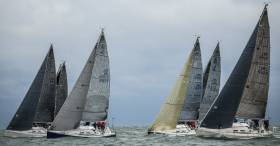Displaying items by tag: Cruisers One
Should Dublin Bay Sailing Club Cruisers Zero & One Merge?
With just over six weeks to the Sherry Fitzgerald sponsored Dublin Bay Sailing Club season the stand–out class of the year looks like Cruisers One where a 20–boat fleet has 13 J/109s among its number. It's an impressive result that bodes well for a very competitive season but in the neighbouring big boat class should something be done to assist falling numbers in Cruisers Zero?
A story this week on Afloat.ie shows George Sisk's Wow from the Royal Irish Yacht Club is on the market. With only four other entries presently in DBSC Cruisers Zero is it now time to dispense with a Cruisers Zero class on Dublin Bay and rearrange the bands to take some lower–rated Cruisers One boats back into Cruisers Two?
Such a scenario is unlikely with the news that Sisk's WOW will be campaigned fully this season and a new Sisk forty footer is in the wings. In fact, there is also the possibility that Cruisers Zero could reach six boats this season with another new boat – yet to be announced – coming into the Bay.
There is also talk of DBSC moving the Cruisers One band lower to move some Cruisers One boats into Cruisers Zero but is that the answer?
Cruisers Zero was never that particularly strong in Dublin Bay and generally came about to ensure they got decent length races as the Cruisers One boats were considerably slower. However with the ever increasing speed of Cruisers One boats the gap in elapsed time between Cruisers Zero and Cruisers One has been reducing considerably.
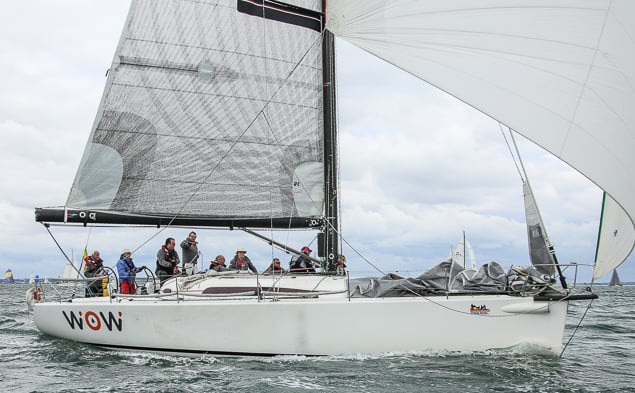 Cruisers Zero Farr 42 Wow is for sale but will be replaced with a similar sized boat Photo: Afloat.ie
Cruisers Zero Farr 42 Wow is for sale but will be replaced with a similar sized boat Photo: Afloat.ie
Cruisers One, spearheaded by the J109 designs, is clearly the strongest class in DBSC and likely in the country. Since the J109 class moved to non–overlapping jibs and consistently updated their sail wardrobes with the latest in sail technologies, they have been getting quicker and quicker.
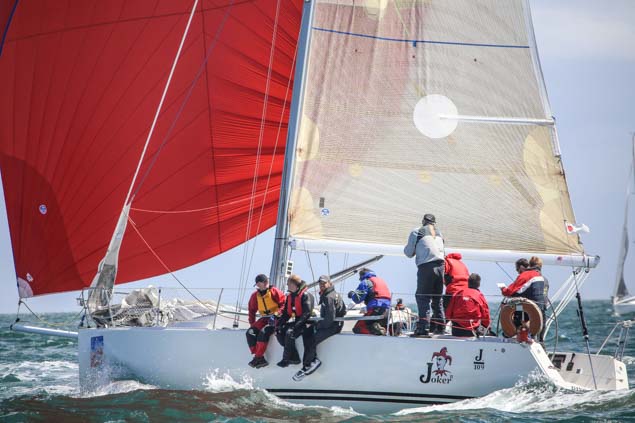 ICRA Boat of the Year, Joker 2, a J109 from the Royal Irish Yacht Club. Photo: Afloat.ie
ICRA Boat of the Year, Joker 2, a J109 from the Royal Irish Yacht Club. Photo: Afloat.ie
Three of the last four ICRA championships in Cruisers One have been won by J109’s including the last two years (Joker II) and the 2016 ICRA Boat of the Year is also a J109 (Joker II). A J109 also was a class winner in the Round Ireland race 2016 (Storm). The J109 class has pushed others in Cruisers One to up their game and now we see both the Archambault 35s Gringo and Adrenalin becoming much more competitive, along with the XP33 Bon Exemple that has gone through many changes over the last few year (symmetric to Asymmetric and back again, lowering their rating). Add to this Paul O'Higgins mighty Rockabill VI, the JPK 10.80, and Cruisers One is the strongest it has ever been.
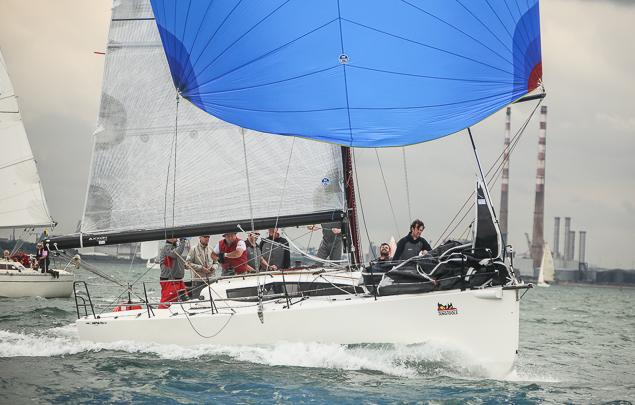 Paul O'Higgins mighty Rockabill VI, the JPK 10.80 design will be unstoppable in heavy airs. Photo: Afloat.ie
Paul O'Higgins mighty Rockabill VI, the JPK 10.80 design will be unstoppable in heavy airs. Photo: Afloat.ie
At the start of last season Tim Goodbody brought in the J109 White Mischief and two further J109’s have entered the fleet in the last six months, Andrew Algeo's Juggerknot and Andrew Craig's Chimeara. All three are seasoned campaigners and will surely drive the fleet further.
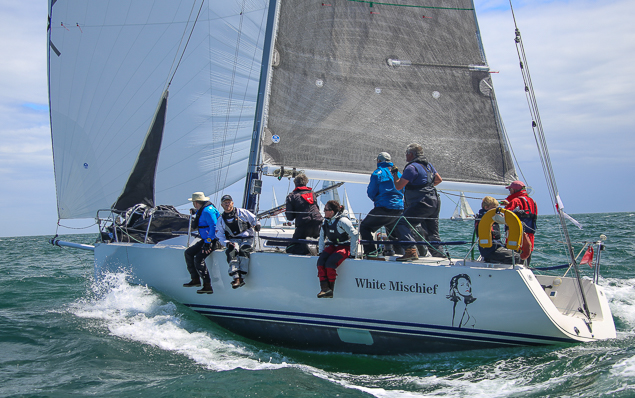 Recent arrival – Tim Goodbody's White Mischief J109 was immediately competitive Photo: Afloat.ie
Recent arrival – Tim Goodbody's White Mischief J109 was immediately competitive Photo: Afloat.ie
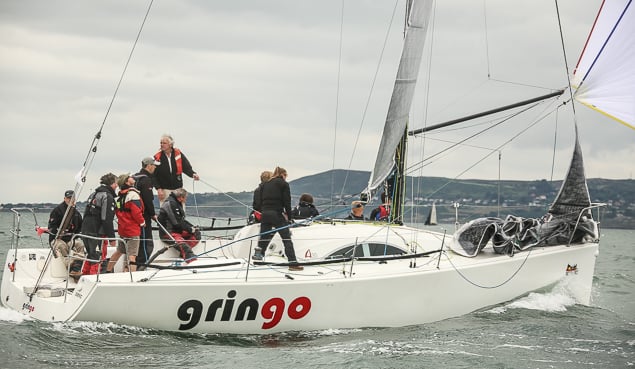 The A35 Gringo has a flatter stern and quick dead downwind. Photo: Afloat.ie
The A35 Gringo has a flatter stern and quick dead downwind. Photo: Afloat.ie
So who will be on the DBSC podiums this year in Cruisers One and also Cruisers One at ICRAs? With 13 J109’s competing surely the podium will be stacked with these 15–year–old designs? They are extremely competitive in lighter airs and can hold their own when the breeze gets up. Their only weakness is running in stronger winds where the lighter, and flatter sterned modern designs, like the A 35’s and XP 33’s can pull their poles back and go straight downwind, whereas the asymmetric J109’s have to do higher angles.
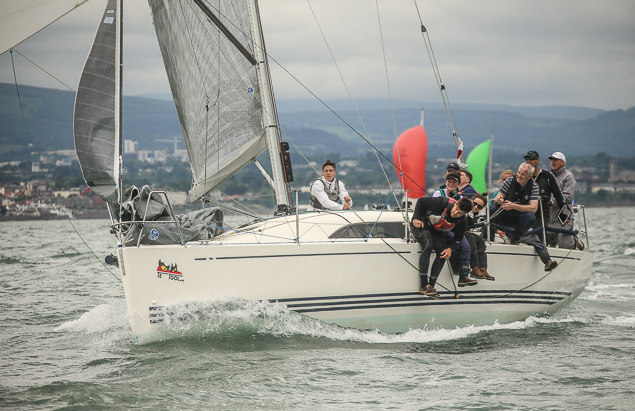 XP33 Bon Exemple – different spinnaker configurations. Photo: Afloat.ie
XP33 Bon Exemple – different spinnaker configurations. Photo: Afloat.ie
If, however, the winds stay stronger for a whole series, like ICRA's 2015, it will be very hard to beat Rockabill VI. This boat is extremely powerful and will go upwind and downwind much faster than the rest of the fleet in a breeze, even taking into account her higher handicap. However it appears she has a weakness in light airs and one day of these conditions in a series might be a problem for her.
Three in a Row for Joker II at ICRAs?
Among the J109’s the top performer from 2016, John Maybury's Joker 2 is going for three in a row at ICRA's having won in 2015 and 2016. She will not have it all her own way however as Tim Goodbody's White Mischief and Pat Kelly's Storm are always very competitive. The newly arrived Chimeara and Juggerknot might also have something to say. The A35 Gringo has shown a lot of form as has Bon Exemple. At ICRAs you will also likely be seeing the A35 Fools Gold of Rob O'Connell in contention as he has done in the last two events.
Packed Season
2017 is set to be a very interesting year for this ever strengthening class with 3 large events in Ireland for them to battle it out. The ICRA Championships in Cork Harbour in June, ten days later, Sovereigns Cup in Kinsale, and a few weeks after that Dun Laoghaire Regatta Some may also venture to Tarbert in Late May, Calves Week in Early August and Abersoch week in Late August. There are plenty of good events available and some great racing ahead. Allied to all of this a great regular racing scene in Cruisers One in the DBSC series.


























